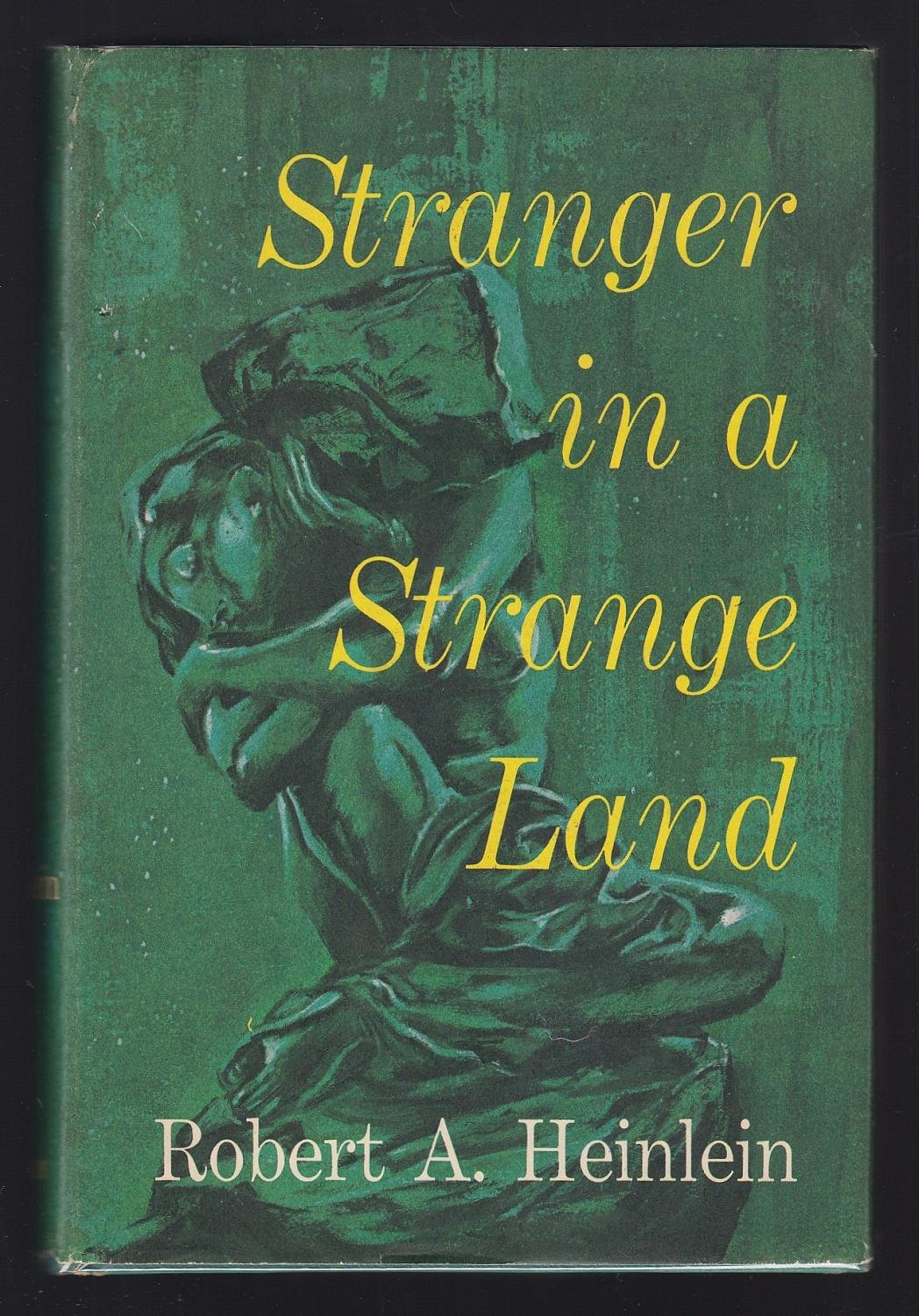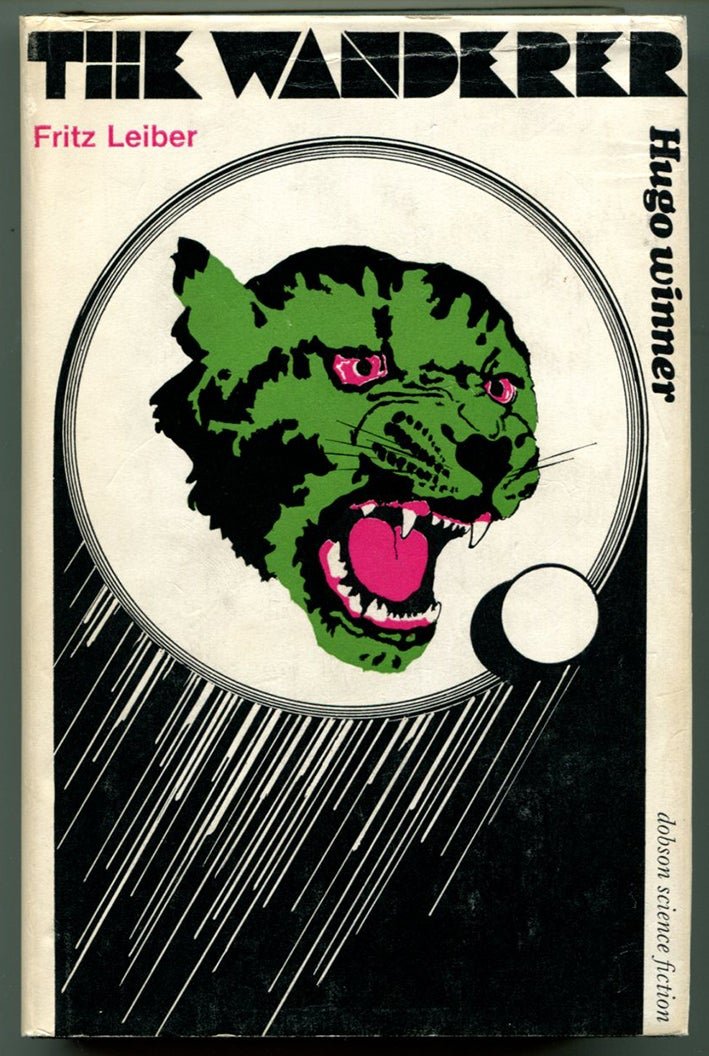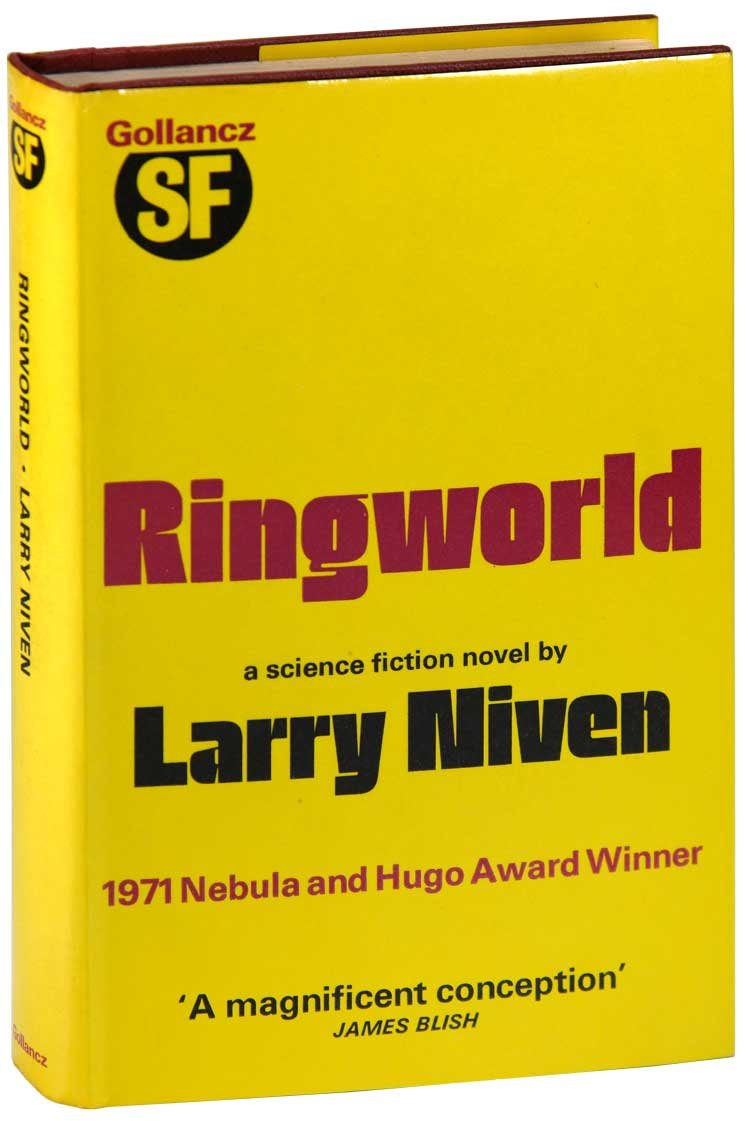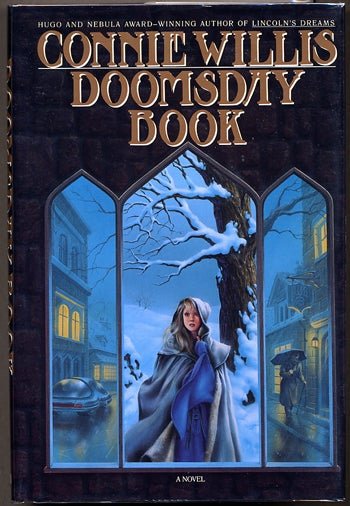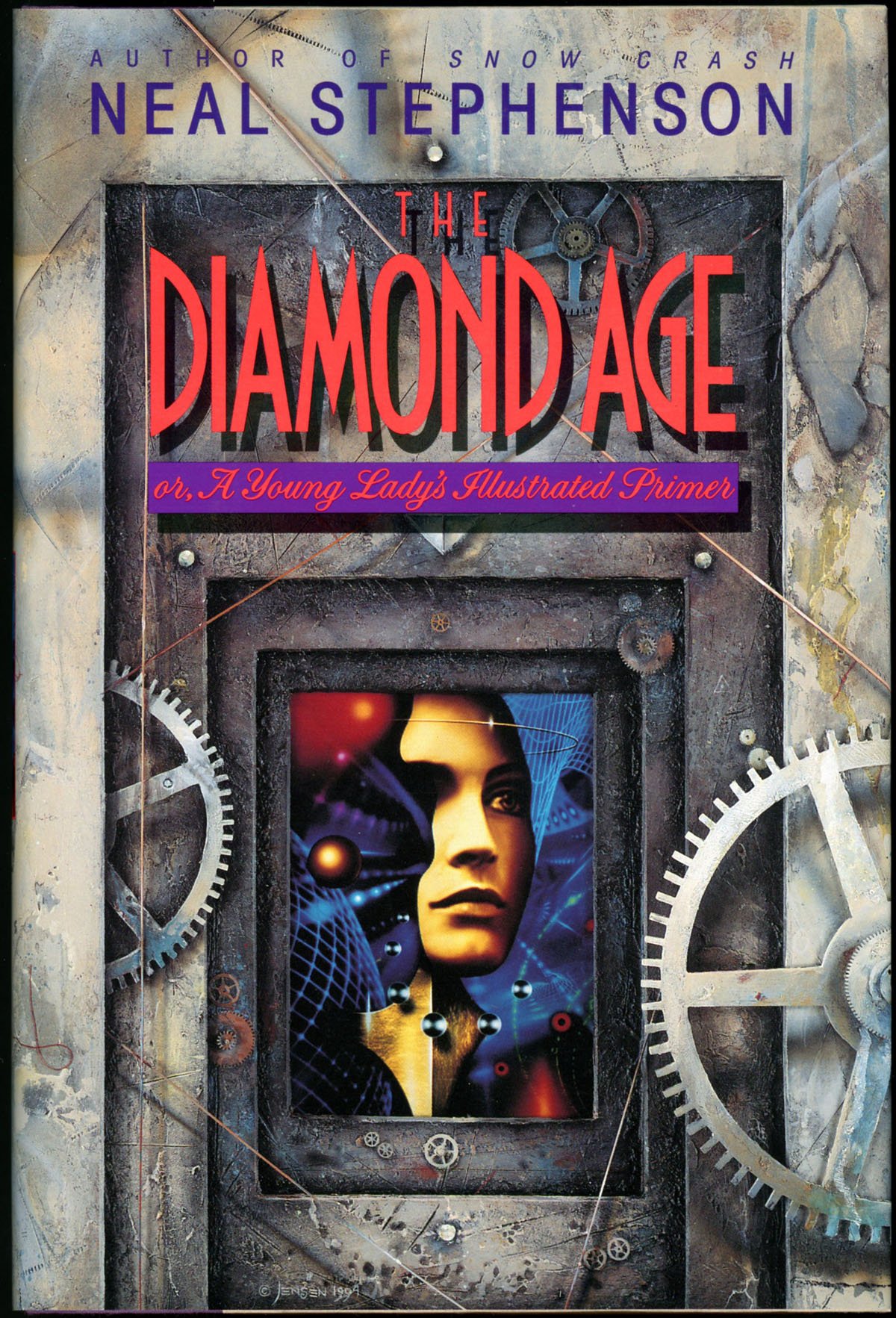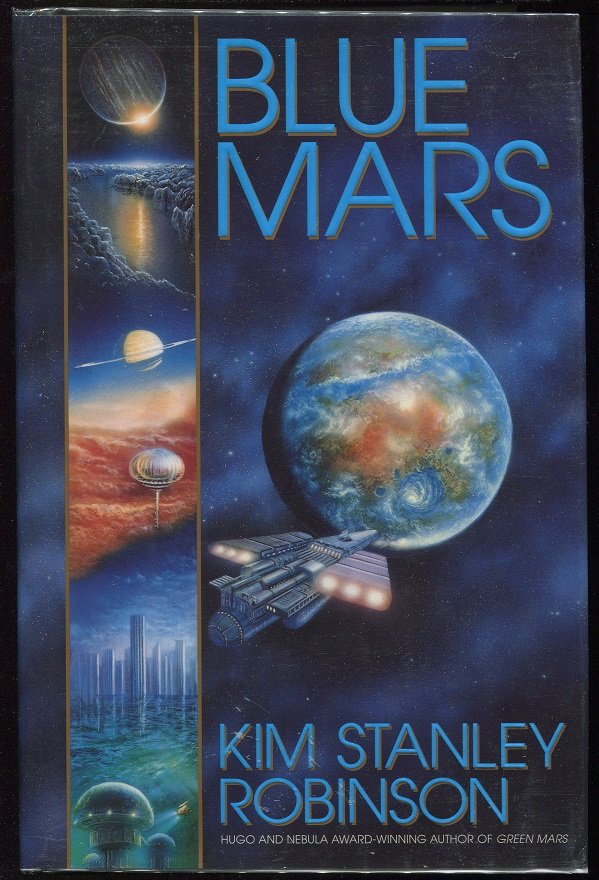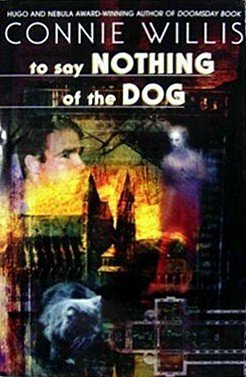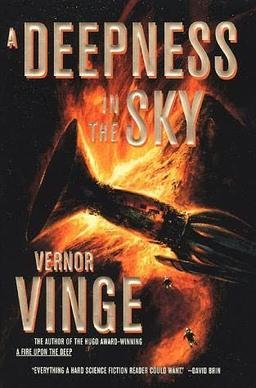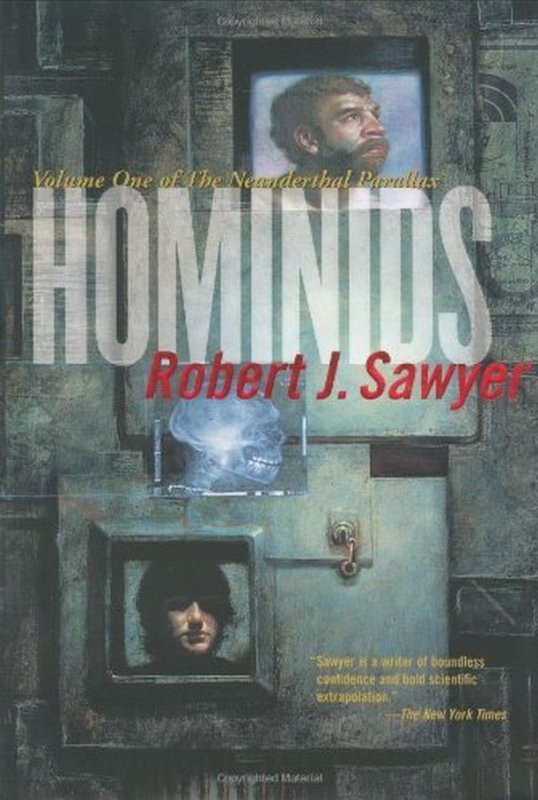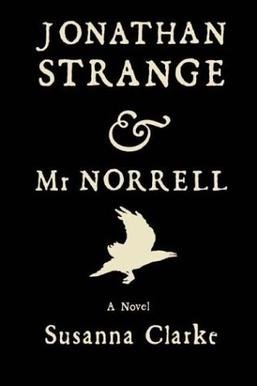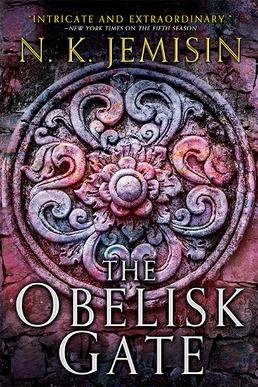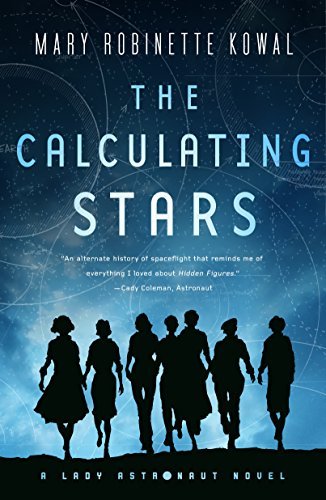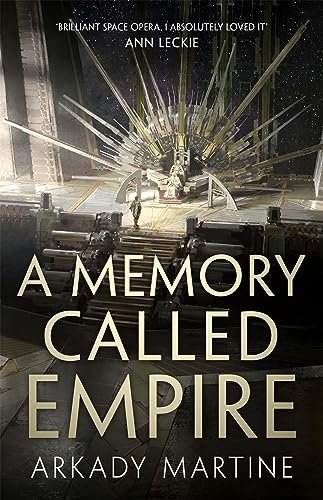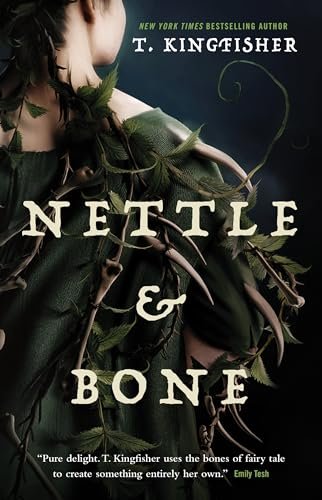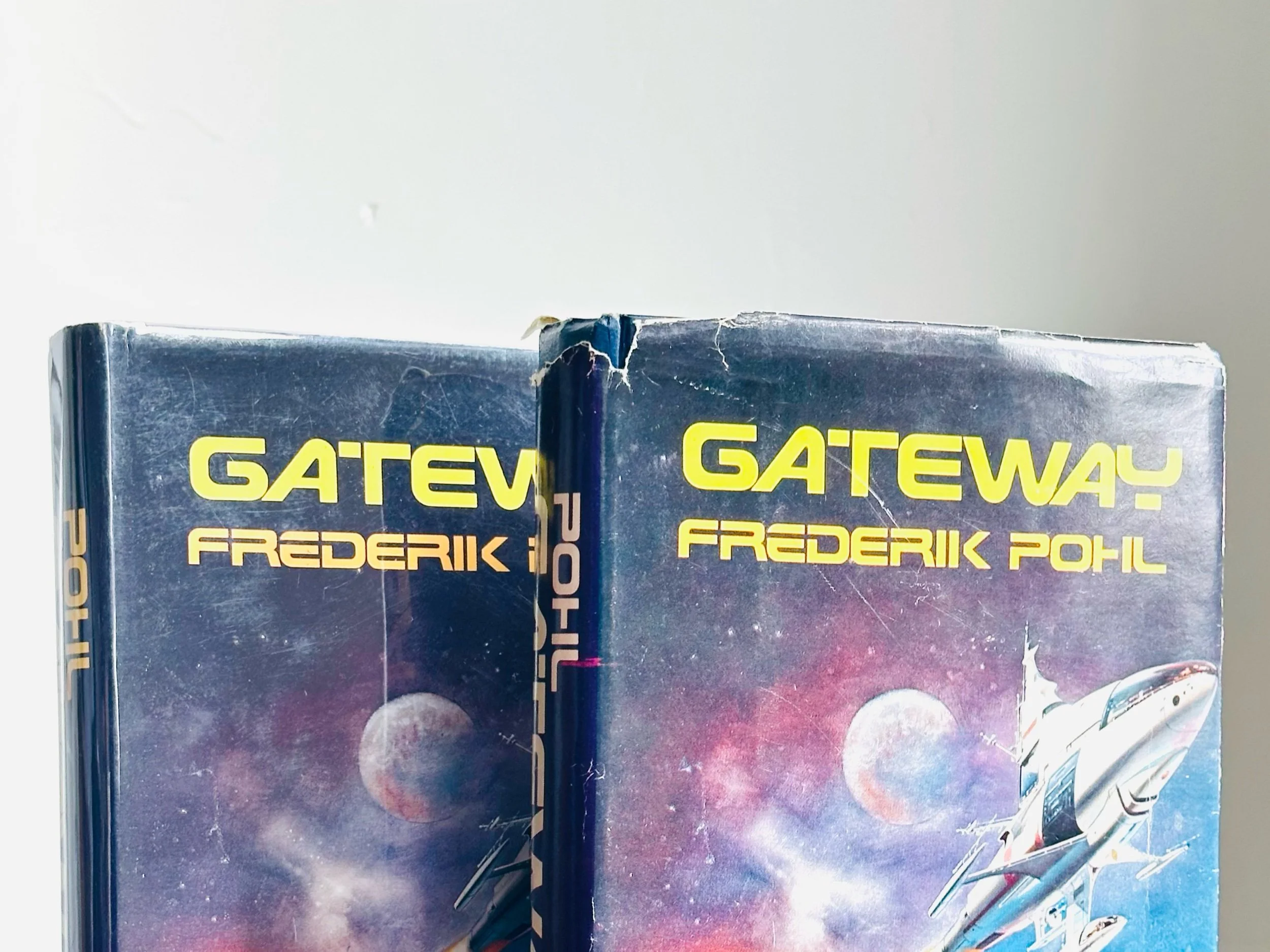Some of Science Fiction’s best... the esteemed Hugo Award winners
The first Hugo Award.
The Hugo Award is one of the most prestigious awards in the field of science fiction and fantasy literature. It is presented annually by the World Science Fiction Society (WSFS) at the World Science Fiction Convention (Worldcon).
Why is it Called the Hugo Award?
The award is named after Hugo Gernsback, an influential editor, inventor, and publisher who is often credited with pioneering modern science fiction. He founded Amazing Stories in 1926, the first magazine dedicated exclusively to science fiction.
Brief History & Notable Points
First Awarded: 1953 at the 11th Worldcon in Philadelphia. After a brief hiatus, it became an annual award in 1955.
Categories: Originally focused on Best Novel, the Hugos have expanded to include Best Short Story, Best Novelette, Best Graphic Story, Best Fanzine, Best Dramatic Presentation (films & TV), and even Best Video Game (as of 2021).
Voting Process: The awards are voted on by members of Worldcon, meaning both writers and fans have a say in the winners.
Notable Winners:
Isaac Asimov (Foundation's Edge, 1983)
Arthur C. Clarke (Rendezvous with Rama, 1974)
Philip K. Dick (The Man in the High Castle, 1963)
Ursula K. Le Guin (The Left Hand of Darkness, 1970)
N.K. Jemisin (First author to win three consecutive Best Novel Hugos, 2016-2018)
Fun Facts
The physical award is a silver rocket ship, inspired by classic pulp sci-fi imagery.
The Retro Hugo Awards can be given for works published in years before 1953 if no Hugos were awarded then.
The Hugos have faced controversies, including the "Sad Puppies" and "Rabid Puppies" campaigns in the 2010s, where some groups attempted to influence the voting process to favor certain ideological perspectives.
1953 :
The Demolished Man
by Alfred Bester
The Demolished Man is a science fiction novel by American writer Alfred Bester, which was the first Hugo Award winner in 1953. An inverted detective story, it was first serialized in three parts, beginning with the January 1952 issue of Galaxy Science Fiction, followed by publication of the novel in 1953. The novel is dedicated to Galaxy's editor, H. L. Gold, who made suggestions during its writing. Bester's title was Demolition!, but Gold talked him out of it.
1955: They’d Rather Be Right by Mark Clifton and Frank Riley
Two professors create an advanced cybernetic brain, which they call "Bossy." Bossy can "optimise your mind...and give you eternal youth into [sic] the bargain, but only if you're ready to abandon all your favourite prejudices." However, when given the choice of admitting they were wrong and therefore being able to benefit from Bossy's abilities, most people would rather be right, and Bossy's ability to confer immortality is almost made ineffective by humanity's fear of "her."
1956: Double Star by Robert A. Heinlein
The novel is set in a future when the Moon, Mars, Venus and Jupiter's satellites have been colonized and the Solar System is governed by a parliamentary democracy under a constitutional monarchy from a capital city on the Moon. The indigenous alien race inhabiting Mars has recently been admitted to citizenship in the human-dominated solar system government.
1958: The Big Time by Fritz Leiber
The storyline features members of one of two factions, both capable of time travel, engaged in a long-term conflict called "The Change War". Their method of battle involves changing the outcomes of events throughout history (temporal war). The two opposing groups are nicknamed the Spiders and the Snakes after their respective sponsors. The true forms or identities of the Spiders and the Snakes, how those nicknames were chosen, or whether they are in any way descriptive are all unknown.
1959: A Case of Conscience by James Blish
A Case of Conscience is a science fiction novel by American writer James Blish, first published in 1958. It is the story of a Jesuit who investigates an alien race that has no religion yet has a perfect, innate sense of morality, a situation which conflicts with Catholic teaching. The story was originally published as a novella in 1953, and later extended to novel-length, of which the first part is the original novella. The novel is the first part of Blish's thematic After Such Knowledge trilogy and was followed by Doctor Mirabilis and both Black Easter and The Day After Judgment (two novellas that Blish viewed as together forming the third volume of the trilogy).
Few science fiction stories of the time attempted religious themes, and still fewer did this with Catholicism.
1960: Starship Troopers by Robert A. Heinlein
Starship Troopers is a military science fiction novel by American writer Robert A. Heinlein. Written in a few weeks in reaction to the US suspending nuclear tests, the story was first published as a two-part serial in The Magazine of Fantasy & Science Fiction as Starship Soldier, and published as a book by G. P. Putnam's Sons on November 5, 1959.
1961: A Canticle for Leibowitz by Walter M. Miller, Jr.
A Canticle for Leibowitz is a post-apocalyptic social science fiction novel by American writer Walter M. Miller Jr., first published in 1959. Set in a Catholic monastery in the desert of the southwestern United States after a devastating nuclear war, the book spans thousands of years as civilization rebuilds itself. The monks of the Albertian Order of Leibowitz preserve the surviving remnants of man's scientific knowledge until the world is again ready for it.
1962: Stranger in a Strange Land by Robert A. Heinlein
Stranger in a Strange Land is a 1961 science fiction novel by the American author Robert A. Heinlein. It tells the story of Valentine Michael Smith, a human who comes to Earth in early adulthood after being born on the planet Mars and raised by Martians, and explores his interaction with and eventual transformation of Terran culture.
The title "Stranger in a Strange Land" is a direct quotation from the King James Bible (taken from Exodus 2:22). The working title for the book was "A Martian Named Smith", which was also the name of the screenplay started by a character at the end of the novel.
1963: The Man in the High Castle by Philip K. Dick
The Man in the High Castle is an alternative history novel by Philip K. Dick, first published in 1962, which imagines a world in which the Axis Powers won World War II. The story occurs in 1962, fifteen years after the end of the war in 1947, and depicts the life of several characters living under Imperial Japan or Nazi Germany as they rule a partitioned United States. The eponymous character is the mysterious author of a novel-within-the-novel entitled The Grasshopper Lies Heavy, a subversive alternative history of the war in which the Allied Powers are victorious.
1964: Here Gather the Stars (Way Station) by Clifford D. Simak
Born in 1840, Enoch Wallace is an American Civil War veteran who fought at the Battle of Gettysburg. He is recruited by an alien, whom Enoch names Ulysses (after Ulysses S. Grant), to operate a way station for interstellar travelers for Galactic Central. The equipment is installed in his house, while he lives in a small adjoining shed. His job is to monitor the machinery, including the regular and emergency "materializers", and make sure the biological needs of the wide variety of travelers are met. Enoch tries to communicate with them, with varying degrees of success, and befriends some of them.
1965: The Wanderer by Fritz Leiber
The Wanderer was the first novel to win the Hugo Award without previously being published in hardcover or appearing in some form in a genre magazine.
The novel deals with a wandering planet that enters the Solar System. Its narrative follows multiple disconnected groups of characters to portray the widespread impact of the Wanderer on the entire population of the Earth (and above it) as well as the varied reactions of different groups as they struggle to cope and survive.
1966: Dune by Frank Herbert
Dune is set in the distant future in a feudal interstellar society, descended from terrestrial humans, in which various noble houses control planetary fiefs. It tells the story of young Paul Atreides, whose family accepts the stewardship of the planet Arrakis. While the planet is an inhospitable and sparsely populated desert wasteland, it is the only source of melange, or "spice", a drug that extends life and enhances mental abilities. Melange is also necessary for space navigation, which requires a kind of multidimensional awareness and foresight that only the drug provides. As melange can only be produced on Arrakis, control of the planet is a coveted and dangerous undertaking. The story explores the multilayered interactions of politics, religion, ecology, technology, and human emotion as the factions of the empire confront each other in a struggle for the control of Arrakis and its spice.
1966: ...And Call Me Conrad (This Immortal) by Roger Zelazny
After being devastated by a nuclear war, the Earth is a planet with a population of only 4 million, overrun by a variety of mutated lifeforms. Worse, much of the Earth is now owned by the Vegans, a race of blue-skinned aliens who see the planet as a tourist location. Conrad Nomikos, the first person narrator, is a man with a past which he would rather not talk about who has been given a task which he would rather refuse: to show an influential Vegan named Cort Myshtigo around the old ruins of Earth.
1967: The Moon Is a Harsh Mistress by Robert A. Heinlein
In 2075, the Moon (Luna) is used as a penal colony by Earth's government, with three million inhabitants (called "Loonies") living in underground cities. Most Loonies are discharged criminals, political exiles, and their free-born descendants; men outnumber women two to one, so polyandry and polygamy are the norm. Due to the Moon's low surface gravity, people who remain longer than six months undergo "irreversible physiological changes", and can never again live comfortably under Earth gravity, making "escape" back to Earth impractical.
1968: Lord of Light by Roger Zelazny
Lord of Light is set on a planet colonized by remnants of Earth from a spaceship called the Star of India. To increase their chances of survival, the crew has used chemical treatments, biofeedback and electronics to mutate their minds and create enhanced self-images, or "Aspects", that let them channel their powers. The crew has also developed a technology to transfer a person's atman, or soul, electronically to a new body. This reincarnation by mind transfer has created a race of potential immortals and allowed the former crew members to institute the Hindu caste system, with themselves at the top.
1969: Stand on Zanzibar by John Brunner
The novel is about overpopulation and its projected consequences. The story is set in 2010, mostly in the United States. The narrative follows the lives of a large cast of characters, chosen to give a broad cross-section of the future world. Some of these interact directly with the central narrative, while others add depth to Brunner's world. Brunner appropriated this narrative technique from the U.S.A. trilogy, by John Dos Passos.
1970: The Left Hand of Darkness by Ursula K. Le Guin
The Left Hand of Darkness is a science fiction novel by the American writer Ursula K. Le Guin. Published in 1969, it became immensely popular, and established Le Guin's status as a major author of science fiction. The novel is set in the fictional Hainish universe as part of the Hainish Cycle, a series of novels and short stories by Le Guin, which she introduced in the 1964 short story "The Dowry of Angyar". It was fourth in sequence of writing among the Hainish novels, preceded by City of Illusions, and followed by The Word for World Is Forest.
1971: Ringworld by Larry Niven
Ringworld is a 1970 science fiction novel by Larry Niven, set in his Known Space universe and considered a classic of science fiction literature. Ringworld tells the story of Louis Wu and his companions on a mission to the Ringworld, an enormous rotating ring, an alien construct in space 186 million miles (299 million kilometres) in diameter. Niven later wrote three sequel novels and then cowrote, with Edward M. Lerner, four prequels and a final sequel; the five latter novels constitute the Fleet of Worlds series. All the novels in the Ringworld series tie into numerous other books set in Known Space. Ringworld won the Nebula Award in 1970, as well as both the Hugo Award and Locus Award in 1971.
1972: To Your Scattered Bodies Go by Philip José Farmer
To Your Scattered Bodies Go (1971) is a science fiction novel by American writer Philip José Farmer, the first book in the Riverworld series. It won a Hugo Award for Best Novel in 1972 at the 30th Worldcon. The title is derived from the 7th of the "Holy Sonnets" by English poet John Donne:
British adventurer Richard Francis Burton dies on Earth and is revived in mid-air in a vast dark room filled with human bodies, some only half-formed. There, he is confronted by men in a flying vehicle who then blast him with a weapon.
1973: The Gods Themselves by Isaac Asimov
The Gods Themselves is a 1972 science fiction novel written by Isaac Asimov, and his first original work in the science fiction genre in fifteen years (not counting his 1966 novelization of Fantastic Voyage). It won the Nebula Award for Best Novel in 1972, and the Hugo Award for Best Novel in 1973.
The book is divided into three main parts, which were first published in Galaxy and Worlds of If as three consecutive stories.
1974: Rendezvous with Rama by Arthur C. Clarke
Rendezvous with Rama is a 1973 science fiction novel by British writer Arthur C. Clarke. Set in the 2130s, the story involves a 50-by-20-kilometre (31-by-12-mile) cylindrical alien starship that enters the Solar System. The story is told from the point of view of a group of human explorers who intercept the ship in an attempt to unlock its mysteries. The novel won both the Hugo and Nebula awards upon its release, and is regarded as one of the cornerstones in Clarke's bibliography. The concept was later extended with several sequels, written by Clarke and Gentry Lee.
1975: The Dispossessed by Ursula K. Le Guin
The Dispossessed (subtitled An Ambiguous Utopia) is a 1974 anarchist utopian science fiction novel by American writer Ursula K. Le Guin, one of her seven Hainish Cycle novels. It is one of a small number of books to win all three Hugo, Locus and Nebula Awards for Best Novel. It achieved a degree of literary recognition unusual for science fiction due to its exploration of themes such as anarchism and revolutionary societies, capitalism, utopia, individualism, and collectivism.
1976: The Forever War by Joe Haldeman
The Forever War (1974) is a military science fiction novel by American author Joe Haldeman, telling the contemplative story about human soldiers fighting an interstellar war against an alien civilization known as the Taurans. It won the Nebula Award in 1975 and the Hugo and Locus awards in 1976. Forever Free (1999) and Forever Peace (1997) are, respectively, direct and thematic sequel novels. The novella A Separate War (1999) is another sequel of sorts, occurring simultaneously with the final portion of The Forever War. Informally, the novels comprise The Forever War series; the novel also inspired a comic book and a board game. The Forever War is the first title in the SF Masterworks series.
1977: Where Late the Sweet Birds Sang by Kate Wilhelm
Where Late the Sweet Birds Sang is a science fiction novel by American writer Kate Wilhelm, published in 1976. The novel is composed of three parts, "Where Late the Sweet Birds Sang," "Shenandoah," and "At the Still Point," and is set in a post-apocalyptic era, a concept popular among authors who took part in the New Wave Science Fiction movement in the 1960s.
Before the publication of Wilhelm's novel in 1976, part one of Where Late the Sweet Birds Sang was featured in the fifteenth edition of Orbit. Kate Wilhelm was a regular contributor to the Orbit anthology series, and assisted Damon Knight and other contributors with the anthology's editing. In its time, Orbit was known for publishing works of SF that differed from the mainstream of science fiction being published at the time.
1978: Gateway by Frederik Pohl
Gateway is a 1977 science-fiction novel by American writer Frederik Pohl. It is the opening novel in the Heechee saga, with four sequels that followed (five books overall). Gateway won the 1978 Hugo Award for Best Novel, the 1978 Locus Award for Best Novel, the 1977 Nebula Award for Best Novel, and the 1978 John W. Campbell Memorial Award for Best Science Fiction Novel. The novel was adapted into a computer game in 1992.
Gateway was serialized in Galaxy prior to its hardcover publication. A short concluding chapter, cut before publication, was later published in the August 1977 issue of Galaxy.
1979: Dreamsnake by Vonda N. McIntyre
Dreamsnake is a 1978 science fiction novel by American writer Vonda N. McIntyre. It is an expansion of her 1973 novelette "Of Mist, and Grass, and Sand", for which she won her first Nebula Award in 1974.The story is set on Earth after a nuclear holocaust. The central character, Snake, is a healer who uses genetically modified serpents to cure sickness—one snake is an alien "dreamsnake", whose venom gives dying people pleasant dreams. The novel follows Snake as she seeks to replace her dreamsnake after its death.
1980: The Fountains of Paradise by Arthur C. Clarke
The Fountains of Paradise is a 1979 science fiction novel by British writer Arthur C. Clarke. Set in the 22nd century, it describes the construction of a space elevator. This "orbital tower" is a giant structure rising from the ground and linking with a satellite in geostationary orbit at the height of approximately 36,000 kilometres (approx. 22,300 miles). Such a structure would be used to raise payloads to orbit without the expense of using rockets. The novel won both the Hugo and Nebula Awards for Best Novel.
1981: The Snow Queen by Joan D. Vinge
The Snow Queen is a 1980 science fiction novel by American writer Joan D. Vinge. It won the Hugo Award for Best Novel in 1981, and was also nominated for the Nebula Award for Best Novel in 1981.
Based on the 1844 fairy tale of the same name by Hans Christian Andersen, The Snow Queen takes place on a mostly oceanic planet called Tiamat. Tiamat's suns orbit a black hole, which facilitates interstellar wormhole travel and connects Tiamat to the rest of the civilized galaxy (the "Hegemony", the remnants of a fallen Galactic Empire).
The Snow Queen was influenced by the poet Robert Graves' 1948 study of mythology, The White Goddess.
1982: Downbelow Station by C. J. Cherryh
Downbelow Station is a science fiction novel by American writer C. J. Cherryh, published in 1981 by DAW Books. It won the Hugo Award in 1982, was shortlisted for a Locus Award that same year,and was named by Locus magazine as one of the top 50 science fiction novels of all time in 1987.
1983: Foundation's Edge by Isaac Asimov
Foundation's Edge (1982) is a science fiction novel by American writer Isaac Asimov, the fourth book in the Foundation Series. It was written more than thirty years after the stories of the original Foundation trilogy, due to years of pressure by fans and editors on Asimov to write another, and, according to Asimov himself, the amount of the payment offered by the publisher. It was his first novel to ever land on The New York Times best-seller list, after 262 books and 44 years of writing.
1984: Startide Rising by David Brin
Startide Rising is a 1983 science fiction novel by American writer David Brin, the second book of six set in his Uplift Universe (preceded by Sundiver and followed by The Uplift War). It earned both Hugo and Nebula Awards for Best Novel in 1984. It was revised by the author in 1993 to correct errors and omissions from the original edition.
An early work by David Brin, it was extremely well reviewed when it was published, has remained popular, and served as the seed for three more novels which revolved around the crew of the Earthship Streaker (the Uplift Storm Trilogy).
1985: Neuromancer by William Gibson
Neuromancer is a 1984 science fiction novel by American-Canadian author William Gibson. Set in a near-future dystopia, the narrative follows Case, a computer hacker enlisted into a crew by a powerful artificial intelligence and a traumatised former soldier to complete a high-stakes heist. It was Gibson's debut novel and, following its success, served as the first entry in the Sprawl trilogy, followed by Count Zero (1986) and Mona Lisa Overdrive (1988).
1986: Ender's Game by Orson Scott Card
Ender's Game is a 1985 military science fiction novel by American author Orson Scott Card. Set at an unspecified date in Earth's future, the novel presents an imperiled humankind after two conflicts with an insectoid alien species they dub "the buggers". In preparation for an anticipated third invasion, Earth's international military force recruits young children, including the novel's protagonist, Andrew "Ender" Wiggin, to be trained as elite officers. The children learn military strategy and leadership by playing increasingly difficult war games, including some in zero gravity, where Ender's tactical genius is revealed.
1987: Speaker for the Dead by Orson Scott Card
Speaker for the Dead is a 1986 science fiction novel by American writer Orson Scott Card, an indirect sequel to the 1985 novel Ender's Game. The book takes place around the year 5270, some 3,000 years after the events in Ender's Game. However because of relativistic space travel at near-light speed Ender himself is only about 35 years old.
1988: The Uplift War by David Brin
The Uplift War is a 1987 science fiction novel by American writer David Brin, the third book of six set in his Uplift Universe. It was nominated as the best novel for the 1987 Nebula Award and won the 1988 Hugo and Locus Awards. The previous two books are Sundiver and Startide Rising.
1989: Cyteen by C. J. Cherryh
Cyteen (1988) is a science fiction novel by American writer C. J. Cherryh, set in her Alliance-Union universe. The murder of a major Union politician and scientist has deep, long-lasting repercussions. It won the Hugo Award for Best Novel in 1989.
The sequel, Regenesis, was published by DAW Books in January 2009.
1990: Hyperion by Dan Simmons
Hyperion is a 1989 science fiction novel by American author Dan Simmons. The first book of his Hyperion Cantos series, it won the Hugo Award for best novel.The plot of the novel features multiple time-lines and is told from the point of view of many characters. It follows a similar structure to The Canterbury Tales by Geoffrey Chaucer. A framing narrative serves as a means to present the tales of a group of pilgrims sent to Hyperion's time tombs, to make a request of the Shrike, a metallic creature that is said to grant one wish to each pilgrim. The story is continued in The Fall of Hyperion, published in 1990.
1991: The Vor Game by Lois McMaster Bujold
The Vor Game is a science fiction novel by Lois McMaster Bujold, first published in September 1990. It won the 1991 Hugo Award for Best Novel. The Vor Game is a part of the Vorkosigan Saga, and is the sixth full-length novel in publication order, and is the sixth story, including novellas, in the internal chronology of the series. It was included in the 1997 omnibus Young Miles.
1992: Barrayar by Lois McMaster Bujold
Barrayar is a science fiction novel by American writer Lois McMaster Bujold. It was first published as four installments in Analog in July–October 1991, and then published in book form by Baen Books in October 1991. Barrayar won both the Hugo Award for Best Novel and the Locus Award for Best Science Fiction Novel in 1992. It is a part of the Vorkosigan Saga, and is the seventh full-length novel of the series, in publication order. Barrayar is a direct sequel to Bujold's first novel, Shards of Honor (1986), and the two are paired in the 1996 omnibus Cordelia's Honor.
1993: A Fire Upon the Deep by Vernor Vinge
A Fire Upon the Deep is a 1992 science fiction novel by American writer Vernor Vinge. It is a space opera involving superhuman intelligences, aliens, variable physics, space battles, love, betrayal, genocide, and a communication medium resembling Usenet. A Fire Upon the Deep won the Hugo Award in 1993, sharing it with Doomsday Book by Connie Willis.
1993: Doomsday Book by Connie Willis
Doomsday Book is a 1992 science fiction novel by American author Connie Willis. The novel won both the Hugo and Nebula Awards, and was shortlisted for other awards. The title of the book refers to the Domesday Book of 1086. Kivrin Engle, the main character, says that her recording is "a record of life in the Middle Ages, which is what William the Conqueror's survey turned out to be."
1994: Green Mars by Kim Stanley Robinson
The Mars trilogy is a series of science fiction novels by Kim Stanley Robinson that chronicles the settlement and terraforming of the planet Mars through the personal and detailed viewpoints of a wide variety of characters spanning 187 years, from 2026 to 2212. Ultimately more utopian than dystopian, the story focuses on egalitarian, sociological, and scientific advances made on Mars, while Earth suffers from overpopulation and ecological disaster.
1995: Mirror Dance by Lois McMaster Bujold
Mirror Dance is a Hugo- and Locus-award-winning science fiction novel by Lois McMaster Bujold. Part of the Vorkosigan Saga, it was first published by Baen Books in March 1994, and is included in the 2002 omnibus Miles Errant.
1996: The Diamond Age by Neal Stephenson
The Diamond Age: Or, A Young Lady's Illustrated Primer is a science fiction novel by American writer Neal Stephenson. It is to some extent a Bildungsroman or coming-of-age story, focused on a young girl named Nell, set in a future world in which nanotechnology affects all aspects of life. The novel deals with themes of education, social class, ethnicity, and the nature of artificial intelligence. The Diamond Age was first published in 1995 by Bantam Books, as a Bantam Spectra hardcover edition. In 1996, it won both the Hugo and Locus Awards, and was shortlisted for the Nebula and other awards.
1997: Blue Mars by Kim Stanley Robinson
The Mars trilogy is a series of science fiction novels by Kim Stanley Robinson that chronicles the settlement and terraforming of the planet Mars through the personal and detailed viewpoints of a wide variety of characters spanning 187 years, from 2026 to 2212. Ultimately more utopian than dystopian, the story focuses on egalitarian, sociological, and scientific advances made on Mars, while Earth suffers from overpopulation and ecological disaster.
1998: Forever Peace by Joe Haldeman
Forever Peace is a 1997 science fiction novel by Joe Haldeman. It won the Nebula Award, Hugo Award and John W. Campbell Memorial Award in 1998. Though its title is similar to The Forever War, and both novels deal with soldiers in the future, Forever Peace is not a direct sequel and takes place on a different future of Earth in 2048.
1999: To Say Nothing of the Dog by Connie Willis
To Say Nothing of the Dog: or, How We Found the Bishop's Bird Stump at Last is a 1997 comic science fiction novel by Connie Willis. It uses the same setting, including time-traveling historians, which Willis explored in Fire Watch (1982), Doomsday Book (1992), and Blackout/All Clear (2010).
To Say Nothing of the Dog won both the Hugo and Locus Awards in 1999, and was nominated for the Nebula Award in 1998.
2000: A Deepness in the Sky by Vernor Vinge
A Deepness in the Sky is a science fiction novel by American writer Vernor Vinge. Published in 1999, the novel is a loose prequel (set 30,000 years previous) to his earlier novel A Fire Upon the Deep (1992). The title is coined by one of the story's main characters in a debate, in a reference to the hibernating habits of his species and to the vastness of space.
2001: Harry Potter and the Goblet of Fire by J.K. Rowling
Harry Potter and the Goblet of Fire is a fantasy novel written by British author J. K. Rowling. It is the fourth novel in the Harry Potter series. It follows Harry Potter, a wizard in his fourth year at Hogwarts School of Witchcraft and Wizardry, and the mystery surrounding the entry of Harry's name into the Triwizard Tournament, in which he is forced to compete.
The book was published in the United Kingdom by Bloomsbury and in the United States by Scholastic. In both countries, the release date was 8 July 2000. This was the first time a book in the series was published in both countries at the same time. The novel won a Hugo Award, the only Harry Potter novel to do so, in 2001.
2002: American Gods by Neil Gaiman
American Gods (2001) is a fantasy novel by British author Neil Gaiman. The novel is a blend of Americana, fantasy, and various strands of ancient and modern mythology, all centering on the mysterious and taciturn Shadow.
The book was published in 2001 by Headline in the United Kingdom and by William Morrow in the United States. It gained a positive critical response and won the 2002 Hugo and Nebula awards.
2003: Hominids by Robert J. Sawyer
The Neanderthal Parallax is a trilogy of novels written by Robert J. Sawyer and published by Tor. It depicts the effects of the opening of a connection between two versions of Earth in different parallel universes: the world familiar to the reader, and another where Neanderthals became the dominant intelligent hominid. The societal, spiritual, and technological differences between the two worlds form the focus of the story.
The trilogy's volumes are Hominids (published 2002), Humans (2003), and Hybrids (2003). Hominids first appeared as a serial in Analog Science Fiction, won the 2003 Hugo Award for Best Novel, and was nominated for the John W. Campbell Award the same year; Humans was a 2004 Hugo Award finalist. In 2017, the full trilogy was presented the Aurora Award for Best of the Decade.
2004: Paladin of Souls by Lois McMaster Bujold
Paladin of Souls is a 2003 fantasy novel by American writer Lois McMaster Bujold. It won the Hugo, Locus, and Nebula awards. It is a sequel to The Curse of Chalion, and takes place approximately three years later. The series that it is part of, World of the Five Gods, won the Hugo Award for Best Series in 2018.
Both Paladin of Souls and its prequel Curse of Chalion (2001) are set in the landlocked medieval kingdom of Chalion, which itself is a fictional equivalent of Castile and León during the time of the Reconquista, or Spanish Reconquest.
2005: Jonathan Strange & Mr Norrell by Susanna Clarke
Jonathan Strange & Mr Norrell is the debut novel by British writer Susanna Clarke. Published in 2004, it is an alternative history set in 19th-century England around the time of the Napoleonic Wars. Its premise is that magic once existed in England and has returned with two men: Gilbert Norrell and Jonathan Strange. Centred on the relationship between these two men, the novel investigates the nature of "Englishness" and the boundaries between reason and unreason, Anglo-Saxon and Anglo-Dane, and Northern and Southern English cultural tropes/stereotypes. It has been described as a fantasy novel, an alternative history, and a historical novel. It inverts the Industrial Revolution conception of the North–South divide in England: in this book the North is romantic and magical, rather than rational and concrete.
2006: Spin by Robert Charles Wilson
Spin is a science fiction novel by American-Canadian writer Robert Charles Wilson. It was published in 2005 and won the Hugo Award for Best Novel in 2006. It is the first book in the Spin trilogy, with Axis (the second) published in 2007 and Vortex published in July 2011.
In January 2015, Syfy announced it was developing a six-hour miniseries based on the book.
2007: Rainbows End by Vernor Vinge
Rainbows End is a 2006 science fiction novel by Vernor Vinge. It was awarded the 2007 Hugo Award for Best Novel. The book is set in San Diego, California, in 2025, in a variation of the fictional world Vinge explored in his 2002 Hugo-winning novella "Fast Times at Fairmont High" and 2004's "Synthetic Serendipity". Vinge had tentative plans for a sequel, picking up some of the loose threads left at the end of the novel. The many technological advances depicted in the novel suggest that the world is undergoing ever-increasing change, following the technological singularity, a recurring subject in Vinge's fiction and nonfiction writing.
2008: The Yiddish Policemen's Union by Michael Chabon
The Yiddish Policemen's Union is a 2007 novel by American author Michael Chabon. The novel is a detective story set in an alternative history version of the present day, based on the premise that during World War II, a temporary settlement for Jewish refugees was established in Sitka, Alaska, in 1941, and that the fledgling State of Israel was destroyed in 1948. The novel is set in Sitka, which it depicts as a large, Yiddish-speaking metropolis.
2009: The Graveyard Book by Neil Gaiman
The Graveyard Book is a young adult novel written by the English author Neil Gaiman, simultaneously published in Britain and America in 2008. The Graveyard Book traces the story of the boy Nobody "Bod" Owens, who is adopted and reared by the supernatural occupants of a graveyard after his family is brutally murdered.
2010: The City & the City by China Miéville
The City & the City is a novel by British author China Miéville that follows a wide-reaching murder investigation in two cities that exist side by side, each of whose citizens are forbidden to go into or acknowledge the other city, combining weird fiction with the police procedural. It was written as a gift for Miéville's terminally ill mother, who was a fan of the latter genre. The novel was published by Macmillan on 15 May 2009.
The novel won the Locus Award for Best Fantasy Novel, Arthur C. Clarke Award, World Fantasy Award, BSFA Award and the Kitschies Red Tentacle; tied for the 2010 Hugo Award for Best Novel, and was nominated for a Nebula Award and John W. Campbell Memorial Award for Best Science Fiction Novel.
2010: The Windup Girl by Paolo Bacigalupi
The Windup Girl is a biopunk science fiction novel by American writer Paolo Bacigalupi. It was his debut novel and was published by Night Shade Books on September 1, 2009. The novel is set in a future Thailand and covers a number of contemporary issues such as global warming and biotechnology.
2011: Blackout/All Clear by Connie Willis
Blackout and All Clear are the two volumes that constitute a 2010 science fiction novel by American author Connie Willis. Blackout was published February 2, 2010 by Spectra. The second part, the conclusion All Clear, was released as a separate book on October 19, 2010. The diptych won the 2010 Nebula Award for Best Novel, the 2011 Locus Award for Best Science Fiction Novel, and the 2011 Hugo Award for Best Novel.These two volumes are the most recent of four books and a short story that Willis has written involving time travel from Oxford during the mid-21st century, all of which won multiple awards.
2012: Among Others by Jo Walton
Among Others is a 2011 fantasy novel written by Welsh-Canadian writer Jo Walton, published originally by Tor Books. It is published in the UK by Corsair (Constable & Robinson). It won the 2012 Nebula Award for Best Novel, the Hugo Award for Best Novel and the British Fantasy Award, and was a nominee for the World Fantasy Award for Best Novel.
2013: Redshirts by John Scalzi
Redshirts (originally titled Redshirts: A Novel with Three Codas) is a postmodern science fiction novel by John Scalzi that satirizes the tropes and narrative elements of Star Trek from the perspectives of several characters in a fictional TV show about the adventures of a starship and its crew who gradually become aware of their true nature.
The book was published by Tor Books in June 2012. An audiobook version was also produced with narration from Star Trek actor Wil Wheaton.Redshirts won the 2013 Hugo Award for Best Novel and Locus Award for Best Science Fiction Novel.
2014: Ancillary Justice by Ann Leckie
Ancillary Justice is a science fiction novel by the American writer Ann Leckie, published in 2013. It is Leckie's debut novel and the first in her Imperial Radch space opera trilogy, followed by Ancillary Sword (2014) and Ancillary Mercy (2015). The novel follows Breq—who is both the sole survivor of a starship destroyed by treachery and the vessel of that ship's artificial consciousness—as she seeks revenge against the ruler of her civilization.
2015: The Three-Body Problem by Liu Cixin
The Three-Body Problem (Chinese: 三体; lit. 'three body') is a 2008 novel by the Chinese hard science fiction author Liu Cixin. It is the first novel in the Remembrance of Earth's Past trilogy. The series portrays a fictional past, present, and future wherein Earth encounters an alien civilization from a nearby system of three Sun-like stars orbiting one another, a representative example of the three-body problem in orbital mechanics.
2016: The Fifth Season by N.K. Jemisin
The Fifth Season is a 2015 science fantasy novel by American writer N. K. Jemisin. It was awarded the Hugo Award for Best Novel in 2016. It is the first volume in the Broken Earth series and is followed by The Obelisk Gate and The Stone Sky.
The Fifth Season takes place on a planet with a single supercontinent called the Stillness. Every few centuries, its inhabitants endure what they call a "Fifth Season" of catastrophic climate change.
2017: The Obelisk Gate by N.K. Jemisin
The Obelisk Gate is a 2016 science fantasy novel by N. K. Jemisin and the second volume in the Broken Earth series—following The Fifth Season, and preceding The Stone Sky. The Obelisk Gate was released to strong reviews and, like its predecessor in the series, won the Hugo Award for Best Novel.
2018: The Stone Sky by N.K. Jemisin
The Stone Sky is a 2017 science fantasy novel by American writer N. K. Jemisin. It was awarded the Hugo Award for Best Novel, the Nebula Award for Best Novel, and the Locus Award for Best Fantasy Novel in 2018. Reviews of the book upon its release were highly positive. It is the third volume in the Broken Earth series, following The Fifth Season and The Obelisk Gate, both of which also won the Hugo Award.
2019: The Calculating Stars by Mary Robinette Kowal
The Calculating Stars is a science fiction novel by American writer Mary Robinette Kowal. The book was published by Tor Books on July 3, 2018. It is the first book in the "Lady Astronaut" series and is a prequel to the 2012 short story "The Lady Astronaut of Mars".
2020: A Memory Called Empire by Arkady Martine
A Memory Called Empire is a 2019 science fiction novel, the debut novel by Arkady Martine. It follows Mahit Dzmare, the ambassador from Lsel Station to the Teixcalaanli Empire, as she investigates the death of her predecessor and the instabilities that underpin that society. The book won the 2020 Hugo Award for Best Novel.
2021: Network Effect by Martha Wells
Network Effect is a 2020 science fiction fantasy novel written by Martha Wells. It is the fifth work in the Murderbot Diaries series and the first full-length novel. Network Effect won the 2021 Hugo Award for Best Novel, the 2020 Nebula Award for Best Novel, and the 2021 Locus Award for Best Science Fiction Novel.
2022: A Desolation Called Peace by Arkady Martine
A Desolation Called Peace is a 2021 space opera science fiction novel by Arkady Martine. It is the sequel to A Memory Called Empire, and the second novel in Martine's Teixcalaan series. Like its predecessor, the book won the Hugo Award for Best Novel, in 2022.
2023: Nettle & Bone by T. Kingfisher
Nettle & Bone is a 2022 fantasy novel by Ursula Vernon, writing as T. Kingfisher. The novel has been described as a dark fairy tale. It won the 2023 Hugo Award for Best Novel and was nominated for the 2023 Locus Award for Best Fantasy Novel, and the Nebula Award for Best Novel of 2022.
2024: Some Desperate Glory by Emily Tesh
Some Desperate Glory is a science fiction novel by Emily Tesh, with political themes and "thrilling action," according to reviewers. It was published in spring 2023 by Tordotcom.
The novel won the Hugo Award for Best Novel in August 2024.











